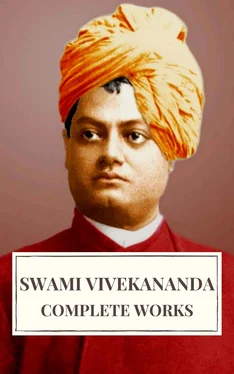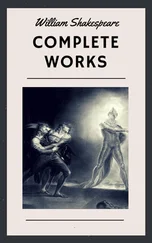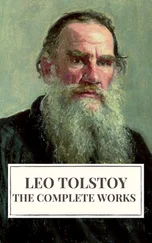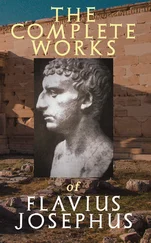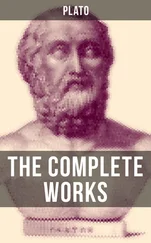I will now read to you some other doctrine of these ancient Upanishads, about birth and death and so on. Perhaps it will interest you. Shvetaketu went to the king of the Panchâlas, and the king asked him, “Do you know where people go when they die? Do you know how they come back? Do you know why the other world does not become full?” The boy replied that he did not know. Then he went to his father and asked him the same questions. The father said, “I do not know,” and he went to the king. The king said that this knowledge was never known to the priests, it was only with the kings, and that was the reason why kings ruled the world. This man stayed with the king for some time, for the king said he would teach him. “The other world, O Gautama, is the fire. The sun is its fuel. The rays are the smoke. The day is the flame. The moon is the embers. And the stars are the sparks. In this fire the gods pour libation of faith and from this libation king Soma is born.” So on he goes. “You need not make oblation to that little fire: the whole world is that fire, and this oblation, this worship, is continually going on. The gods, and the angels, and everybody is worshipping it. Man is the greatest symbol of fire, the body of man.” Here also we see the ideal becoming practical and Brahman is seen in everything. The principle that underlies all these stories is that invented symbolism may be good and helpful, but already better symbols exist than any we can invent. You may invent an image through which to worship God, but a better image already exists, the living man. You may build a temple in which to worship God, and that may be good, but a better one, a much higher one, already exists, the human body.
You remember that the Vedas have two parts, the ceremonial and the knowledge portions. In time ceremonials had multiplied and become so intricate that it was almost hopeless to disentangle them, and so in the Upanishads we find that the ceremonials are almost done away with, but gently, by explaining them. We see that in old times they had these oblations and sacrifices, then the philosophers came, and instead of snatching away the symbols from the hands of the ignorant, instead of taking the negative position, which we unfortunately find so general in modern reforms, they gave them something to take their place. “Here is the symbol of fire,” they said. “Very good! But here is another symbol, the earth. What a grand, great symbol! Here is this little temple, but the whole universe is a temple; a man can worship anywhere. There are the peculiar figures that men draw on the earth, and there are the altars, but here is the greatest of altars, the living, conscious human body, and to worship at this altar is far higher than the worship of any dead symbols.”
We now come to a peculiar doctrine. I do not understand much of it myself. If you can make something out of it, I will read it to you. When a man dies, who has by meditation purified himself and got knowledge, he first goes to light, then from light to day, from day to the light half of the moon, from that to the six months when the sun goes to the north, from that to the year, from the year to the sun, from the sun to the moon, from the moon to the lightning, and when he comes to the sphere of lightning, he meets a person who is not human, and that person leads him to (the conditioned) Brahman. This is the way of the gods. When sages and wise persons die, they go that way and they do not return. What is meant by this month and year, and all these things, no one understands clearly. Each one gives his own meaning, and some say it is all nonsense. What is meant by going to the world of the moon and of the sun, and this person who comes to help the soul after it has reached the sphere of lightning, no one knows. There is an idea among the Hindus that the moon is a place where life exists, and we shall see how life has come from there. Those that have not attained to knowledge, but have done good work in this life, first go, when they die, through smoke, then to night, then to the dark fifteen days, then to the six months when the sun goes to the south, and from that they go to the region of their forefathers, then to ether, then to the region of the moon, and there become the food of the gods, and later, are born as gods and live there so long as their good works will permit. And when the effect of the good work has been finished, they come back to earth by the same route. They first become ether, and then air, and then smoke, and then mist, then cloud, and then fall upon the earth as raindrops; then they get into food, which is eaten up by human beings, and finally become their children. Those whose works have been very good take birth in good families, and those whose works have been bad take bad births, even in animal bodies. Animals are continually coming to and going from this earth. That is why the earth is neither full nor empty.
Several ideas we can get also from this, and later on, perhaps, we shall be able to understand it better, and we can speculate a little upon what it means. The last part which deals with how those who have been in heaven return, is clearer, perhaps, than the first part; but the whole idea seems to be this that there is no permanent heaven without realising God. Now some people who have not realised God, but have done good work in this world, with the view of enjoying the results, go, when they die, through this and that place, until they reach heaven, and there they are born in the same way as we are here, as children of the gods, and they live there as long as their good works will permit. Out of this comes one basic idea of the Vedanta that everything which has name and form is transient. This earth is transient, because it has name and form, and so the heavens must be transient, because there also name and form remain. A heaven which is eternal will be contradictory in terms, because everything that has name and form must begin in time, exist in time, and end in time. These are settled doctrines of the Vedanta, and as such the heavens are given up.
We have seen in the Samhitâ that the idea of heaven was that it was eternal, much the same as is prevalent among Mohammedans and Christians. The Mohammedans concretise it a little more. They say it is a place where there are gardens, beneath which rivers run. In the desert of Arabia water is very desirable, so the Mohammedan always conceives of his heaven as containing much water. I was born in a country where there are six months of rain every year. I should think of heaven, I suppose, as a dry place, and so also would the English people. These heavens in the Samhita are eternal, and the departed have beautiful bodies and live with their forefathers, and are happy ever afterwards. There they meet with their parents, children, and other relatives, and lead very much the same sort of life as here, only much happier. All the difficulties and obstructions to happiness in this life have vanished, and only its good parts and enjoyments remain. But however comfortable mankind may consider this state of things, truth is one thing and comfort is another. There are cases where truth is not comfortable until we reach its climax. Human nature is very conservative It does something, and having once done that, finds it hard to get out of it. The mind will not receive new thoughts, because they bring discomfort.
In the Upanishads, we see a tremendous departure made. It is declared that these heavens in which men live with the ancestors after death cannot be permanent, seeing that everything which has name and form must die. If there are heavens with forms, these heavens must vanish in course of time; they may last millions of years, but there must come a time when they will have to go. With this idea came another that these souls must come back to earth, and that heavens are places where they enjoy the results of their good works, and after these effects are finished they come back into this earth life again. One thing is clear from this that mankind had a perception of the philosophy of causation even at the early time. Later on we shall see how our philosophers bring that out in the language of philosophy and logic, but here it is almost in the language of children. One thing you may remark in reading these books that it is all internal perception. If you ask me if this can be practical, my answer is, it has been practical first, and philosophical next. You can see that first these things have been perceived and realised and then written. This world spoke to the early thinkers. Birds spoke to them, animals spoke to them, the sun and the moon spoke to them; and little by little they realised things, and got into the heart of nature. Not by cogitation not by the force of logic, not by picking the brains of others and making a big book, as is the fashion in modern times, not even as I do, by taking up one of their writings and making a long lecture, but by patient investigation and discovery they found out the truth. Its essential method was practice, and so it must be always. Religion is ever a practical science, and there never was nor will be any theological religion. It is practice first, and knowledge afterwards. The idea that souls come back is already there. Those persons who do good work with the idea of a result, get it, but the result is not permanent. There we get the idea of causation very beautifully put forward, that the effect is only commensurate with the cause. As the cause is, so the effect will be. The cause being finite, the effect must be finite. If the cause is eternal the effect can be eternal, but all these causes, doing good work, and all other things, are only finite causes, and as such cannot produce infinite result.
Читать дальше
